Wednesday night’s Board of Education meeting extended past midnight as District leadership and Board members spent more than three hours alone weighing the health and safety considerations of a return to school and the implications of Assembly Bill 77 on any school reopening plan.
While staving off cuts to K-12 funding, the education trailer to AB 77 includes specific language around in-person learning, requiring that it be offered “to the greatest extent possible,” effectively removing a full distance-learning option from consideration at this time.
According to the bill, which district administrators are still parsing, distance learning can only occur for students who would be put at risk by in-person learning or have been exposed to COVID-19 and are self-quarantining. However, districts can still pivot to distance learning if recommended by a local or state public health officer (i.e. a new shelter in place order). The bill also extends the 2019-20 ADA Hold Harmless Act to the 2020-21 school year, specifies the required instructional minutes, and allows schools to offer a form of distance learning, as long as the in-person requirements are also met. Although schools will be required to provide 180 days of instruction per year, the minimum number of instructional minutes will be reduced to give teachers flexibility in distance learning.
The “blended learning” plan Booker proposed is a weekly combination of in-person, online synchronous, and online asynchronous lessons.
Synchronous learning happens in real-time, whereas asynchronous learning occurs through online channels at different times.
The model seeks to provide the greatest amount of in-person learning while maintaining the Centers for Disease Control and Prevention (CDC), California Department of Public Health (CDPH), and Alameda Department of Public Health (ADPH) guidelines. These include social distancing, masks, sanitation of facilities, student absence, and health screening of students and staff.
While the specifics of what an elementary, middle, and high school day might look like have yet to be negotiated (the committee responsible for developing a daily bell schedule for all campuses is taking a pause to consider AB 77), highlights of the “blended learning” plan include:
- Students who are infected with COVID-19 will be unable to come onto campus until a medical provider states in writing that the student is no longer contagious.
- Students who are identified as part of a high-risk population can request an alternative instructional method.
Students who have been on a commercial flight or traveled outside the U.S. or have been in contact with someone who has been on a commercial flight or traveled outside of the U.S. must quarantine at home for 14 days before being allowed on school grounds. “I’m asking families to pay attention to their travel plans prior to the start of school,” Booker said.
- Social distancing: Desks will be placed 6 ft apart, restroom access will be adjusted to allow for social distancing, and large gatherings will be suspended until the Board determines otherwise.
- PPE: Face coverings will be mandated for students and staff on all campuses. The district will provide for those who do not bring their own.
- School facilities and shared equipment will be cleaned using the Victory Electrostatic Sprayers and an EPA list N-approved PurTab disinfectant daily. (Custodial staff have already completed a pandemic cleaning program.)
- The ventilation systems will be upgraded with CDC-recommended MERV-13 filters to increase air filtration throughout the classroom.
- Outdoor classroom space can be used at discretion of classroom teacher.
- Each day before arrival on campuses, all students will be screened by filling out an at-home questionnaire with questions recommended by the CDC.
- Letter grades will resume.
UCSF infectious disease expert Dr. George Rutherford offers mix of hope and realism
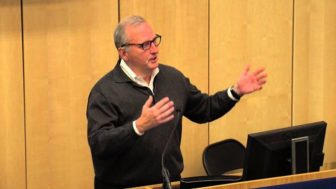
Rutherford, who has been advising PUSD as it seeks to develop a reopening plan and was invited to join Wednesday’s session, called PUSD’s proposal “reasonable” given the state of the pandemic in the Bay Area. He noted that California’s rising case numbers were largely happening in hot spots outside of the Bay Area, or clustered in specific neighborhoods, nursing homes, and prisons. “Masking is your ‘get out of jail free’ card,” he said. While noting the challenges of getting teens in particular to follow rules, he said face coverings and social distancing measures should be non-negotiable. Rutherford also said with some certainty that the likelihood of students transmitting the virus to teachers was small, and that the transmission of the virus via surfaces and objects is less of a risk than that posed by person-to-person contact.
All eyes on schools
As is true across the country, families are tracking reopening plans closely. At its peak, the District says that 256 people attended Wednesday night’s Zoom meeting, with more watching on KCOM. School Board member Cory Smegal says the Board had received approximately 250 emails related to the reopening issue before Wednesday’s meeting and expects that number will continue to grow. Parents and teachers have waded into the debate on a popular Facebook page for Piedmont parents, sharing links to news stories that highlight how other school districts are planning for an uncertain future.
A round-up by SFGate on Bay Area districts reveals no district has definitively figured out a way forward yet, and an article in the Washington Post about Fairfax County’s plans could easily apply to Piedmont. (One of the country’s largest districts “is asking families to choose between 100 percent virtual learning or part-time in-person schooling next year, one of the first concrete plans for fall released by schools nationwide.”)
Survey shows teachers, families split on returning to the classroom
The District presented the results of a survey it sent out last Friday to assess parent and teacher comfort levels with a return to school. Over 1,000 parents responded. According to the survey, around 90 percent of families said they feel comfortable sending their children to school if the district could follow guidelines offered by the CDPH, CDE, and the CDC, and around 80 percent of families would prefer a blended model of instruction for the 2020-21 school year over distance learning.
The survey, as was pointed out by multiple participants during the public forum, did not include an option for a five-day model, an option favored by many who spoke at the meeting. Booker said that he had not included the five-day model because PUSD did not have the space in its facilities to follow social distancing guidelines as outlined by the CDC and other public health agencies (i.e., maintaining 6 ft distance between desks in classrooms.) He noted that while the guidelines are not laws, he was leaning heavily on public health guidance.
In comparison to families, PUSD staff are more reluctant to return to in-person school.
Of the 131 respondents, about 56 percent of teachers would feel comfortable returning, while 44 percent of teachers said they would not feel comfortable.
Board members weigh new ideas, remain focused on health and safety
Board members wrangled with the wide array of suggestions, queries, and comments brought before them, considering everything from placing cameras in classrooms, what to do about substitute teachers, how to handle lunchtimes, to how to cohort students — one of the most complicated aspects of the planning. Safety remained top priority, and support for a predictable, regular schedule with as much in-person learning as possible was clear. The Board remained concerned about the ability of community members to follow mask-wearing guidance, a condition of any school reopening.
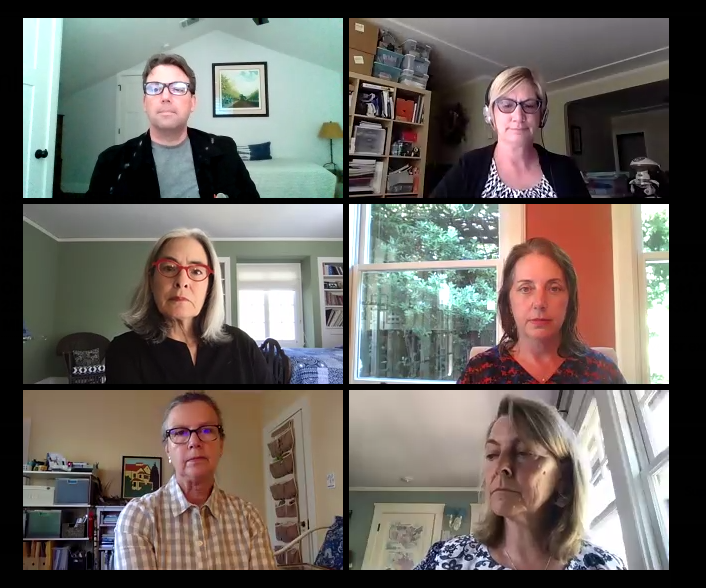
“I have a feeling we are going to have to pivot back and forth as we move in and out of phases of opening,” said Board President Amal Smith as the meeting wound down.
“What we are going to try to have to do is to prioritize–what can we accomplish and what are the tradeoffs. We just can’t do it all.” Booker told the Board.
Association of Piedmont Teachers (APT) lead negotiator Gabriel Kessler acknowledged the challenges of coming to terms. “As we engage in this work there are many fraught conversations because we care a lot. Community members need to know that. We have had teachers meeting daily for hours. We are trying to find a balance of safety of students and our colleagues,” he said. “Whatever decisions we make, the school will look a lot different in the fall, and the model will be one that we [the teachers] will give everything to,” Kessler said.
The next meeting will be held on June 30 (not June 29 as noted in earlier documents), when Booker will present a blended learning model for a second reading and approval by the Board, with more meetings to follow on July 2 and July 7. The approval of a 2020-2021 budget was moved to June 30.
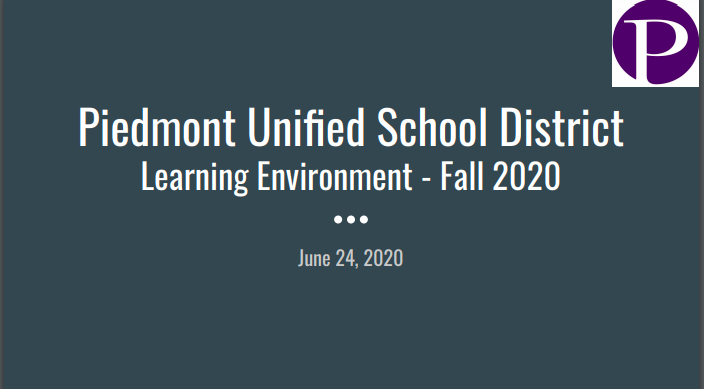
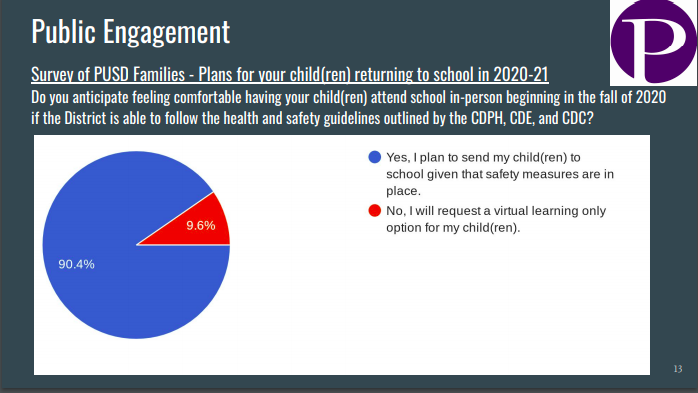
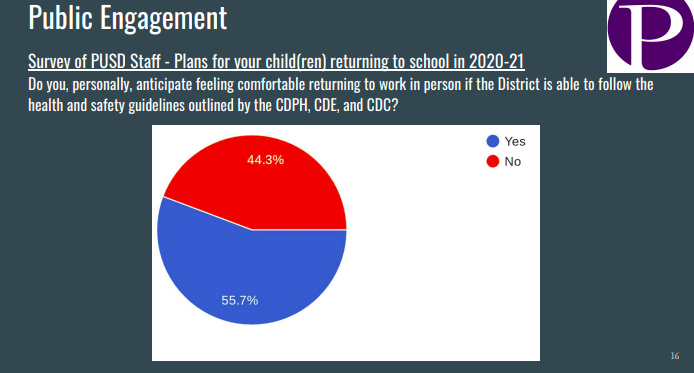
Great reporting – thank you!